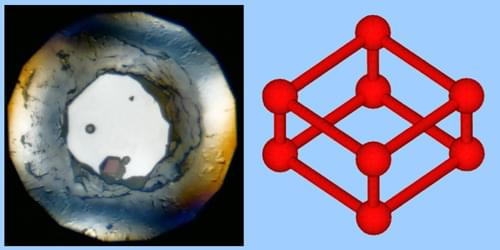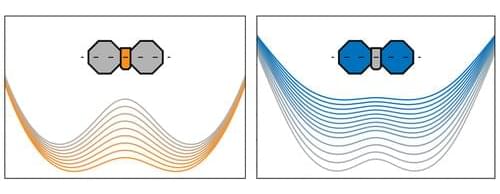We’ve reached a new major milestone for our senior dog program, LOY-002, intended to extend lifespan in dogs over 10 years and weighing 14 lb or more. Our Founder and CEO Celine reflects on feedback and progress so far.





In a new study published in Nature Physics, scientists have achieved the first experimental observation of phonon angular momentum in chiral crystals.
Phonons are the quantized lattice vibrations representing sound and heat in crystals. Theoretically, phonons have been predicted to carry finite angular momentum with potentially remarkable macroscopic consequences.
The famous Einstein-de Haas effect explains how quantum mechanical spin connects to classical angular momentum when a ferromagnetic cylinder rotates under magnetic fields. While this effect has been known for over a century, the phonon version had remained purely theoretical until now.

Astronomers have discovered what may be a massive star exploding while trying to swallow a black hole companion, offering an explanation for one of the strangest stellar explosions ever seen.
The discovery was made by a team led by the Center for Astrophysics | Harvard & Smithsonian (CfA) and the Massachusetts Institute of Technology (MIT) as part of the Young Supernova Experiment. The results are published in The Astrophysical Journal.
The blast, named SN 2023zkd, was first discovered in July 2023 by the Zwicky Transient Facility. A new AI algorithm designed to scan for unusual explosions in real time first detected the explosion, and that early alert allowed astronomers to begin follow-up observations immediately—an essential step in capturing the full story of the explosion. By the time the explosion was over, it had been observed by a large set of telescopes, both on the ground and from space.

Using NASA’s Chandra and ESA’s XMM-Newton space observatories, Indian astronomers have explored the population of ultraluminous X-ray sources in the galaxy NGC 5813, which resulted in the detection of a new source of this type. Results of the observational campaign were published August 7 on the pre-print server arXiv.

The next time you breathe, consider this: Photosynthesis of algae, powered by iron dust in the ocean, made it possible.
Now, a Rutgers University study published in the Proceedings of the National Academy of Sciences pulls back the curtain on this vital process.
Iron is a critical micronutrient for marine phytoplankton, the microscopic algae that form the foundation of the ocean’s food webs. It is deposited into the world’s oceans as dust from deserts and arid areas as well as from glacial meltwater.

Farmers might be able to get help tending and harvesting crops using a new sensing technology from Carnegie Mellon University’s Robotics Institute (RI). Researchers have invented a tool called SonicBoom that can find crops like apples based on the sound they make. The novel technology, still in the early stages of development, may someday be used by farm robots for tasks like pruning vines or locating ripe apples hidden among the leaves.
“Even without a camera, this sensing technology could determine the 3D shape of things just by touching,” said Moonyoung (Mark) Lee, a fifth-year Ph.D. student in robotics.
A paper describing this technology appears in IEEE Robotics and Automation Letters.

When we are out in cold weather, we wear warm clothes to stay comfortable. But there is a snag. Regular warm clothing can’t adjust to changes in our body temperature. If we start to sweat, we get too hot and sticky, which makes us want to remove layers. This defeats the purpose of wearing them, since we still need to stay warm.
But what if our clothes could adapt? That’s the question Xiuqiang Li at Nanjing University of Aeronautics and Astronautics in China and his colleagues set out to answer. They have developed a jacket with a filling made from a bacterial cellulose membrane that responds to human sweating.
The innovative membrane automatically adjusts its thickness based on humidity. It’s 13 millimeters thick in cool, dry conditions and shrinks to just 2 millimeters when humidity levels are high, such as when you sweat. This allows the jacket to be thick when you need to stay warm and then get thinner when you want to cool down a little.

A key objective of behavioral science research is to better understand how people make decisions in situations where outcomes are unknown or uncertain, which entail a certain degree of risk.
The ability to predict people’s choices in these situations could be highly advantageous, as it could help to draft effective initiatives aimed at prompting people to make better decisions for themselves and others in their community.
Researchers at Technion (Israel Institute of Technology) and various institutes in the United States recently developed a new computational model called BEAST-GB, which was found to predict people’s decisions in situations that entail risk and uncertainty.